6.1: My Healthy Hygiene
- Page ID
- 2408
\( \newcommand{\vecs}[1]{\overset { \scriptstyle \rightharpoonup} {\mathbf{#1}} } \)
\( \newcommand{\vecd}[1]{\overset{-\!-\!\rightharpoonup}{\vphantom{a}\smash {#1}}} \)
\( \newcommand{\id}{\mathrm{id}}\) \( \newcommand{\Span}{\mathrm{span}}\)
( \newcommand{\kernel}{\mathrm{null}\,}\) \( \newcommand{\range}{\mathrm{range}\,}\)
\( \newcommand{\RealPart}{\mathrm{Re}}\) \( \newcommand{\ImaginaryPart}{\mathrm{Im}}\)
\( \newcommand{\Argument}{\mathrm{Arg}}\) \( \newcommand{\norm}[1]{\| #1 \|}\)
\( \newcommand{\inner}[2]{\langle #1, #2 \rangle}\)
\( \newcommand{\Span}{\mathrm{span}}\)
\( \newcommand{\id}{\mathrm{id}}\)
\( \newcommand{\Span}{\mathrm{span}}\)
\( \newcommand{\kernel}{\mathrm{null}\,}\)
\( \newcommand{\range}{\mathrm{range}\,}\)
\( \newcommand{\RealPart}{\mathrm{Re}}\)
\( \newcommand{\ImaginaryPart}{\mathrm{Im}}\)
\( \newcommand{\Argument}{\mathrm{Arg}}\)
\( \newcommand{\norm}[1]{\| #1 \|}\)
\( \newcommand{\inner}[2]{\langle #1, #2 \rangle}\)
\( \newcommand{\Span}{\mathrm{span}}\) \( \newcommand{\AA}{\unicode[.8,0]{x212B}}\)
\( \newcommand{\vectorA}[1]{\vec{#1}} % arrow\)
\( \newcommand{\vectorAt}[1]{\vec{\text{#1}}} % arrow\)
\( \newcommand{\vectorB}[1]{\overset { \scriptstyle \rightharpoonup} {\mathbf{#1}} } \)
\( \newcommand{\vectorC}[1]{\textbf{#1}} \)
\( \newcommand{\vectorD}[1]{\overrightarrow{#1}} \)
\( \newcommand{\vectorDt}[1]{\overrightarrow{\text{#1}}} \)
\( \newcommand{\vectE}[1]{\overset{-\!-\!\rightharpoonup}{\vphantom{a}\smash{\mathbf {#1}}}} \)
\( \newcommand{\vecs}[1]{\overset { \scriptstyle \rightharpoonup} {\mathbf{#1}} } \)
\( \newcommand{\vecd}[1]{\overset{-\!-\!\rightharpoonup}{\vphantom{a}\smash {#1}}} \)
\(\newcommand{\avec}{\mathbf a}\) \(\newcommand{\bvec}{\mathbf b}\) \(\newcommand{\cvec}{\mathbf c}\) \(\newcommand{\dvec}{\mathbf d}\) \(\newcommand{\dtil}{\widetilde{\mathbf d}}\) \(\newcommand{\evec}{\mathbf e}\) \(\newcommand{\fvec}{\mathbf f}\) \(\newcommand{\nvec}{\mathbf n}\) \(\newcommand{\pvec}{\mathbf p}\) \(\newcommand{\qvec}{\mathbf q}\) \(\newcommand{\svec}{\mathbf s}\) \(\newcommand{\tvec}{\mathbf t}\) \(\newcommand{\uvec}{\mathbf u}\) \(\newcommand{\vvec}{\mathbf v}\) \(\newcommand{\wvec}{\mathbf w}\) \(\newcommand{\xvec}{\mathbf x}\) \(\newcommand{\yvec}{\mathbf y}\) \(\newcommand{\zvec}{\mathbf z}\) \(\newcommand{\rvec}{\mathbf r}\) \(\newcommand{\mvec}{\mathbf m}\) \(\newcommand{\zerovec}{\mathbf 0}\) \(\newcommand{\onevec}{\mathbf 1}\) \(\newcommand{\real}{\mathbb R}\) \(\newcommand{\twovec}[2]{\left[\begin{array}{r}#1 \\ #2 \end{array}\right]}\) \(\newcommand{\ctwovec}[2]{\left[\begin{array}{c}#1 \\ #2 \end{array}\right]}\) \(\newcommand{\threevec}[3]{\left[\begin{array}{r}#1 \\ #2 \\ #3 \end{array}\right]}\) \(\newcommand{\cthreevec}[3]{\left[\begin{array}{c}#1 \\ #2 \\ #3 \end{array}\right]}\) \(\newcommand{\fourvec}[4]{\left[\begin{array}{r}#1 \\ #2 \\ #3 \\ #4 \end{array}\right]}\) \(\newcommand{\cfourvec}[4]{\left[\begin{array}{c}#1 \\ #2 \\ #3 \\ #4 \end{array}\right]}\) \(\newcommand{\fivevec}[5]{\left[\begin{array}{r}#1 \\ #2 \\ #3 \\ #4 \\ #5 \\ \end{array}\right]}\) \(\newcommand{\cfivevec}[5]{\left[\begin{array}{c}#1 \\ #2 \\ #3 \\ #4 \\ #5 \\ \end{array}\right]}\) \(\newcommand{\mattwo}[4]{\left[\begin{array}{rr}#1 \amp #2 \\ #3 \amp #4 \\ \end{array}\right]}\) \(\newcommand{\laspan}[1]{\text{Span}\{#1\}}\) \(\newcommand{\bcal}{\cal B}\) \(\newcommand{\ccal}{\cal C}\) \(\newcommand{\scal}{\cal S}\) \(\newcommand{\wcal}{\cal W}\) \(\newcommand{\ecal}{\cal E}\) \(\newcommand{\coords}[2]{\left\{#1\right\}_{#2}}\) \(\newcommand{\gray}[1]{\color{gray}{#1}}\) \(\newcommand{\lgray}[1]{\color{lightgray}{#1}}\) \(\newcommand{\rank}{\operatorname{rank}}\) \(\newcommand{\row}{\text{Row}}\) \(\newcommand{\col}{\text{Col}}\) \(\renewcommand{\row}{\text{Row}}\) \(\newcommand{\nul}{\text{Nul}}\) \(\newcommand{\var}{\text{Var}}\) \(\newcommand{\corr}{\text{corr}}\) \(\newcommand{\len}[1]{\left|#1\right|}\) \(\newcommand{\bbar}{\overline{\bvec}}\) \(\newcommand{\bhat}{\widehat{\bvec}}\) \(\newcommand{\bperp}{\bvec^\perp}\) \(\newcommand{\xhat}{\widehat{\xvec}}\) \(\newcommand{\vhat}{\widehat{\vvec}}\) \(\newcommand{\uhat}{\widehat{\uvec}}\) \(\newcommand{\what}{\widehat{\wvec}}\) \(\newcommand{\Sighat}{\widehat{\Sigma}}\) \(\newcommand{\lt}{<}\) \(\newcommand{\gt}{>}\) \(\newcommand{\amp}{&}\) \(\definecolor{fillinmathshade}{gray}{0.9}\)
National Health Education Standards (NHES)
- 12.1 Predict how healthy behaviors, such as personal health affect health status.
- 12.2 Demonstrate a variety of personal health practices and behaviors that will maintain or improve the health of self and others.

- Instruction: In a group or think pair share format, have participants discuss the following questions. Acknowledge those who have progressed toward their goal(s) and encourage anyone who wants to change or modify their goal to get 1:1 support.
- Share: Let’s discuss our SMART Goals.
-
- How is it going with your current SMART goal?
- What are some ways you can improve progress toward your goal? (Grows)
- What are some ways you are doing well with progress towards your goal? (Glows)
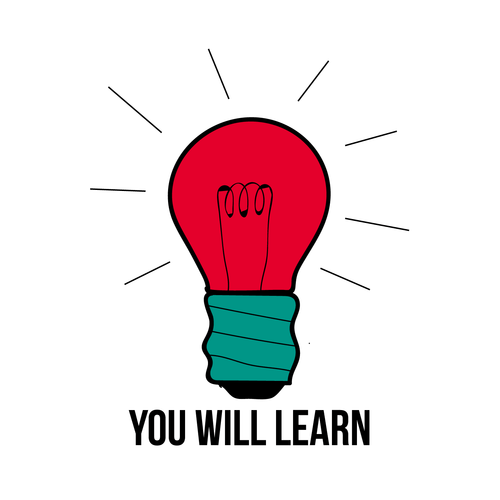
- How to take care of your hands, skin, mouth and teeth, eyes and ears so that you are physically healthy.
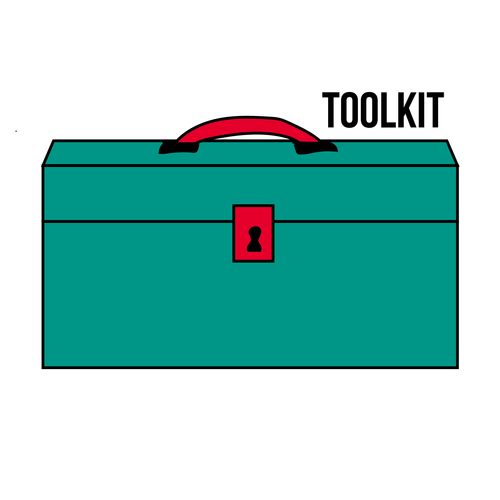
- Glitter
- Soap
- Skin model
- Images of Skin Cancer
- Sunblock lotion
- Teeth model
- Images of cavities and gum disease
- Floss
- Toothbrush
- Mint Gum
- Eye model
- Sunglasses
- Eye drops
- Images of pink eye
- Ear model
- Earplugs
- Human Body Station Handouts
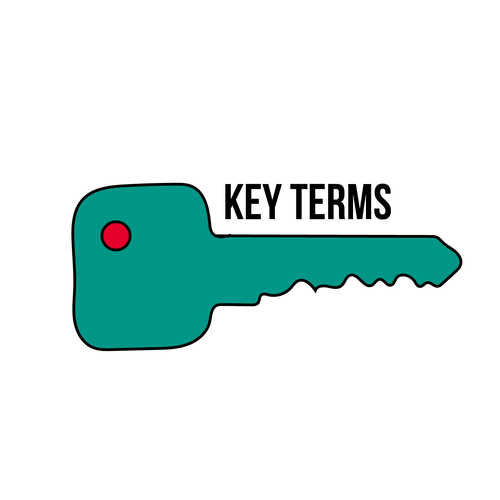
[As defined by American Cancer Society, 2016; PubMed Health, 2016; American Academy of Ophthalmology, 2016; American Dental Association, n.d.; National Cancer Institute, n.d.; National Institute of Arthritis and Musculoskeletal and Skin Disease, n.d.;.]
- Hygiene: the things that you do to keep yourself and your surroundings clean in order to maintain good health.
- Skin Cancer: The most common type of cancer. The main types of skin cancer are squamous cell carcinoma, basal cell carcinoma, and melanoma. Melanoma is much less common than the other types but much more likely to invade nearby tissue and spread to other parts of the body.
- Acne: a condition in which the skin on a person's face, neck, etc., has many small, swollen spots (called pimples).
- Melanoma: Form of cancer that begins in melanocytes which may appear as a mole.
- Melanocytes: a cell in the skin that produces and contains the pigment called melanin in the epidermis.
- Plaque: a soft sticky film that covers your teeth which consists of bacteria that turns into calculus.
- Cavity: acid producing bacteria destroy tooth enamel causing your tooth to rot.
- Gum (Periodontal) Disease: an inflammation of the gums that, if severe, can lead to the loss of the tissues that teeth in place.
- Conjunctivitis: also known as pink eye, is when the conjunctiva is irritated by an infection or allergies, eyes are red and swollen and sometimes have a sticky discharge.
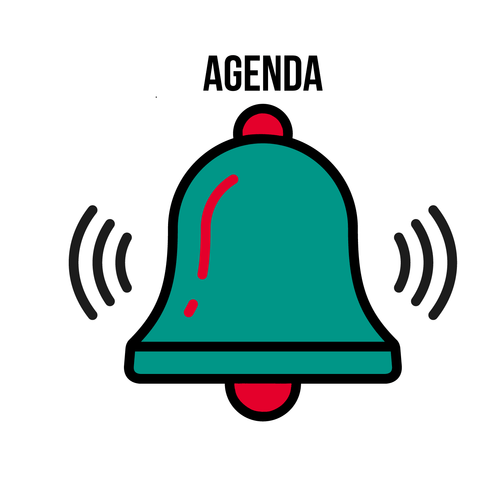
- Do Now
- Keep Up with Your Personal Health
- How to Keep Healthy
- What Can We Do?
- Exit Ticket

Do Now:
- Instruction: Have participants answer the following questions on their worksheet or by sharing out loud.
- How much time do you spend 'getting ready’ in the morning, showering, doing your hair, brushing your teeth, etc?
- Do you wear sunscreen? Floss your teeth? Wear sunglasses? Use earplugs? Wear helmets for skateboarding, biking, skiing etc? Do you have good or poor posture?
- Why, or why not, are doing these things important to you?
Good to Know: Keep Up with Your Personal Health
- Share:
- Personal hygienes are the things you do to keep yourself and your surroundings clean that in order to maintain good health. What are some examples of practicing good hygiene?
- Washing your hands, brushing your teeth and taking care of your ears, eyes, and skin are a big part of personal hygiene.
- Hands
- Washing our hands is one of the most important things we can do to avoid being sick and spreading germs to other people. If you are somewhere without access to clean water you should use an alcohol-based sanitizer that has at least 60% alcohol to clean your hands. (CDC, 2018)
- Mouth and Teeth
- The teeth and mouth play an important role in digesting food. Food is torn, ground and moistened in the mouth.
- The teeth tear, mash and grind our food and some food particles get stuck in between our gums and teeth which can cause plaque, cavities and gum disease. Plaque is a soft sticky film that covers your teeth which consists of bacteria that turns into calculus (American Dental Association, n.d.). A cavity is formed when acid producing bacteria destroy tooth enamel causing your tooth to rot (American Dental Association, n.d.). Food particles can also cause gum Disease known as periodontal disease is an inflammation of the gums that, if severe, can lead to the loss of the tissues that hold your teeth in place.
- Rotting teeth and gum disease can be prevented by brushing your teeth twice daily, floss once a day or visiting your dentist regularly. (American Dental Association, n.d.)
- Skin
- The skin is the body’s biggest organ. The skin functions to:
- Protects our bodies that fight off germs and ultraviolet. rays
- Help keep our bodies at just the right temperature.
- Allows us to have a sense of touch.
- Oil-producing glands are in the skin can cause inflammation and create acne, the condition in which the skin on a person's face, neck, etc., has many small, swollen spots (called pimples) on the skin. Acne is a disorder of the skin caused by inflammation of the skin glands and hair follicles. To prevent acne, wash your face twice a day with warm water and soap.
- Bathing or showering daily helps keep your skin removing bacteria from the skin surface. Using a mild soap can help keep your skin from becoming infected (CDC, 2001). In addition to bathing, we must keep our hands clean too.
- Too much ultraviolet rays from the sun or tanning beds that can damage the melanocytes (American Cancer Society, 2016.) in our skin, causing melanoma (PubMed Health, 2016) to spread. Melanoma is cancer that begins in the melanocytes. A melanocyte is a cell in the skin that produces and contains the pigment called melanin in the epidermis. It is important to use sunscreen to block the ultraviolet rays while outside or wearing long-sleeve shirts and pants or hats. (PubMed Health, 2016)
- The skin is the body’s biggest organ. The skin functions to:
- Eyes
- The eyeball is about the size and shape of a ping-pong ball. Eyes function to detect patterns of light which work with your brain to process the images such as the object and color.
- The eye is protected by the eyelids and the eyelashes, which keep dirt, dust, and even harmful bright light out of the eye.
- Eyes are very delicate and can easily get conjunctivitis (American Academy of Ophthalmology, 2016) from bacteria, viruses or allergies. Conjunctivitis is also known as pink eye, is when the conjunctiva is irritated by an infection or allergies, eyes are red and swollen and sometimes have a sticky discharge. It can be prevented from washing your hands before touching your eyes, washing your eyes or take allergy medicine. (Teen Health, 2015)
- Ear
- Ears main function is to hear, but they also help you keep your balance.
- The ears are delicate organs that need care and protection. Sounds that are too loud can damage the ears and lead to hearing loss. Use ear plugs as protection while at a concert or construction sites. Unsafe piercings can lead to painful infections. Be careful about getting piercings, go to a piercing professional to help prevent ear infections. (American Academy of Otolaryngology, n.d.)
Hands-On: How to Keep Healthy Stations
- Set up:
- Around the room, set up five (5) Human Body Part Stations with signage, the related handouts and any other materials listed in the toolkit.
- Instruction:
- Divide participants into five (5) equal groups.
- Assign each group to begin at one (1) station.
- At the station have the group view models and images, and perform each station activity.
- After a certain amount of time, (suggest 5-8 minutes) signal (stopping of music playing, gong, whistle, etc.) groups to switch stations.
- Repeat until all the groups have visited each station.
- Prior to starting, go over the instructions for each station.
Station 1: Handwashing
- Share:
- At this station, we will be learning what is the purpose of hand washing.
- We should always wash our hands:
- Before, during, and after preparing food
- Before eating food
- Before and after caring for someone who is sick
- Before and after treating a cut or wound
- After using the toilet
- After changing diapers or cleaning up a child who has used the toilet
- After blowing your nose, coughing, or sneezing
- After touching an animal, animal feed, or animal waste
- After handling pet food or pet treats
- After touching garbage (CDC, 2018)
- Instruction:
- Tell participants to read the handout that has glitter on it.
- Have participants place a small amount of glitter on their hands
- Instruct the group to wash hands with just water first.
- Instruct the group to wash hands with water and soap.
- Wet your hands with clean, running water (warm or cold), and apply soap.
- Lather your hands by rubbing them together with the soap. Be sure to lather the backs of your hands, between your fingers, and under your nails.
- Scrub your hands for at least 20 seconds.
- Rinse your hands well under clean, running water.
- Dry your hands using a clean towel or air dry them.
- Why did the glitter not come off with just water?
- ‘Germs’ just don’t come with water, soap helps clean the germs off our hands.
Station 2: Teeth and Gums
- Share:
- At this station, we will be learning what is the purpose of brushing and flossing our teeth.
- We will look at a model of the teeth and use the toothbrush to brush the teeth to make it clean.
- Instruction:
- View handout that displays images of cavities and gum disease.
- Have participants take a small amount of floss to floss their teeth and take a piece of gum.
- How does brushing and flossing our teeth make them clean?
- To prevent food particles from getting stuck in between our teeth.
- Reduces the risk of gum disease and cavities.
- Cleans bacteria that make up bad breath.
Station 3: Skin
- Share:
- At this station, we will be learning what is the purpose of the skin protection.
- How does the sunblock lotion protect our skin from the sun?
- The sunblock has a sun protection factor that blocks the UV rays from entering our skin.
- Instruction:
- View a model of the skin and handout with images of skin cancer.
- Have participants put skin lotion on their skin.
Station 4: Eyes
- Share:
- At this station, we will be learning what is the purpose of cleaning and protecting our eyes.
- What is some way to protect your eyes?
- Use eye drops and tissues to clean out bacteria in the eye to prevent infections or pink eye.
- Wear sunglasses from bright light to prevent harming your eye.
- Instruction:
- View a model of the eyes and handout image of the pink
- Use the eye drops and place drops on the eye model.
- Use a tissue to clean the eye.
- Try on sunglasses to protect the eyes from the sun.
Station 5: Ears
- Share:
- At this station, we will be learning what is the purpose of our protecting our ears.
- Why do earplugs help protect our ears?
- They prevent loud sounds from damaging our eardrum.
- Instruction:
- View a model of the ears.
- Try on earplugs.
Real World Relevance: What Happens If We Don’t Keep Up?
- Ask participants about the dangers of what happens if we do not keep up with our hygiene.
- Possible answers for facilitators are given below
|
Body Part |
Dangers |
|
Hands |
Bacteria can get in our nails and cause a nail infection or transfer bacteria to our eyes and face [CDC, n.d.]. |
|
Skin |
By not wearing any sunblock can cause your skin cells to be damaged by the sun [Teen Health, 2014]. |
|
Mouth and Teeth |
The food particles can get stuck in between your teeth and cause bacteria to grow to form gum disease [Teen Health, 2015]. |
|
Eyes |
Can get itchy and cause yellow discharge with the touch of bacteria from your hands or glasses [Teen Health, 2014]. |
|
Ears |
Earwax can cause hearing loss by blocking your ear canal. (American Academy of Otolaryngology, n.d.) |
Sources:
- American Academy of Otolaryngology-Head and Neck Surgery. (n.d.). How the Ear Works. Retrieved from http://www.entnet.org/content/how-ear-works
- American Dental Association. (n.d.) What 10 Common Mouth Conditions Really Look Like https://www.mouthhealthy.org/en/what...sues-look-like
- Better Hearing Institute. (n.d.). Hearing Loss Prevention. Retrieved from www.betterhearing.org/hearing...oss-prevention
- Centers for Disease Control, Hand Washing. (n.d.) Retrieved From: https://www.cdc.gov/handwashing/show...ndwashing.html
- Know Your Back. (n.d.). 10 Tips for a Healthy Back. Retrieved from www.spine.org/KnowYourBack/P...oraHealthyBack
- Teen Health (2015). Taking Care of Your Teeth. Retrieved from http://teenshealth.org/en/teens/teeth.html
- Teen Health. (2014). Taking Care of Your Vision. Retrieved from http://teenshealth.org/en/teens/vision-care.html
- Teen Health. (2014). Tips for Taking Care of Your Skin. Retrieved from http://teenshealth.org/en/teens/skin-tips.html
- Share:
- Share any tips not discussed by participants.
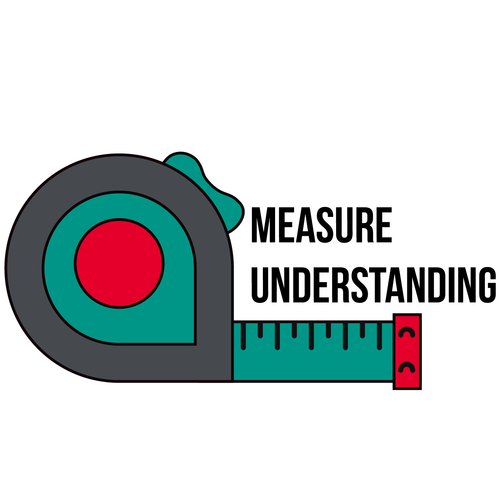
Exit Ticket: 3-2-1
- Instruction:
- Have participants write on their worksheet or share out loud the following question(s).
- What are three (3) body parts that are important to clean and prevent injury in?
- What are two (2) tips on keeping your different parts of the body healthy?
- What was your one (1) favorite Human Body Station and why?
- Have participants write on their worksheet or share out loud the following question(s).
Bibliography
- American Academy of Otolaryngology-Head and Neck Surgery. (n.d.). How the Ear Works. Retrieved from http://www.entnet.org/content/how-ear-works
- American Cancer Society. (2016). What is Melanoma Skin Cancer. Retrieved from cancer.org: https://www.cancer.org/cancer/melano...-melanoma.html
- American Dental Association. (2018). Retrieved from https://www.mouthhealthy.org/en/az-topics/c/cavities
- American Dental Association. (2018). Periodontal Disease. Retrieved From: https://www.ada.org/~/media/ADA/Publ...t_jan_2011.pdf
- Centers for Disease Control, Hand Washing. (n.d.) Retrieved From: https://www.cdc.gov/handwashing/show...ndwashing.html
- Centers for Disease Control Skin Hygiene. (n.d.) Retrieved From: https://www.cdc.gov/eid/article/7/2/70-0225_article
- Colgate Oral and Dental Health Resource Center. (2013). How to Brush. Retrieved from ColgatePalmolive.com: http://www.colgate.com/app/CP/US/EN/...-to-Brush.cvsp
- Colgate Oral and Dental Health Resource (2013). How to Floss Properly. Retrieved from ColgatePalmolive.com: http://www.colgate.com/app/CP/US/EN/...-to-Floss.cvsp
- Kids Health. (2013). How Your Skin Works. Retrieved from Youtube.com: youtu.be/aMGgCxUyXT8
- National Cancer Institute. Skin Cancer. Retrieved From: https://www.cancer.gov/types/skin
- National Eye Institute. (2016). About the Eye. Retrieved from https://nei.nih.gov/kids/about_the_eye
- National Eye Institute: How Vision Works Video. (2016). Retrieved from YouTube.com: youtu.be/i3_n3Ibfn1c
- Natural Hearing; How We Hear. (2010, May 20). Retrieved from YouTube.com: http://www.youtube.com/watch?v=stiPMLtjYAw
- PubMed Health. (2016). How Does Skin Work. Retrieved from www.ncbi.nlm.nih.gov/pubmedhealth/PMH0072439/
- Teen Health. (2015). Retrieved from TeenHealth.org: http://teenshealth.org/en/teens/eyes.html
- Teen Health. (2015). Mouth and Teeth. Retrieved from TeenHealth.org: http://teenshealth.org/en/teens/mout...tml?WT.ac=t-ra
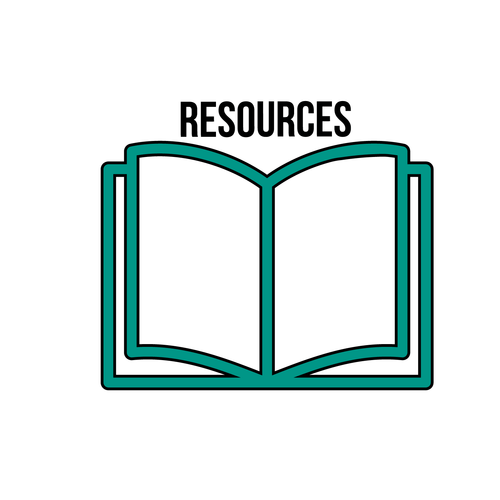
- Handwashing Poster from CDC www.cdc.gov/ounceofpreventio...ochure_eng.pdf

